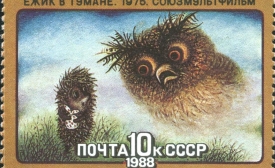cartoons

The case for cartoons as soft power.
The recent Hello Kitty Con–a massive gathering of the immortal Sanrio character’s biggest fans—only marked the beginnings of the pop culture icon’s celebration in Los Angeles. For another five months, until April 26, 2015, the city’s Japanese American National Museum hosts a pilgrimage-worthy exhibition: Hello! Exploring the Supercute World of Hello Kitty.
At a time when the restive region of Xinjiang has witnessed executions of suspected separatists, knife attacks on train passengers, and clashes between the Chinese government and forces it has identified as Muslim extremists, a film company believes it has the answer — a cartoon princess. With the encouragement of the authorities, a Chinese animation company is turning to a Disney-like character for help in bringing ethnic Uighurs and Han Chinese together.
Over the past few years, Sabir Nazar has emerged as Pakistan's best known cartoonist for drawing a series of cartoons that take a sharply critical look at religious orthodoxy, conspiracy theories, and misinterpretations of current affairs that feed into the Pakistani mass consciousness. Through cartoons and comments posted on the social networking site Facebook, he offers biting insights that turn commonly-held viewpoints and beliefs about Pakistan on their heads.
In many ways, the Middle East makes a strange -- and at times perilous -- hotbed for caricature. Many of the region's leaders have a poor reputation for humor, and often, the list of banned topics makes for a long read. For those that dare to satirize a taboo, the punishments can be harsh: arrest, torture, exile, even death.
Israel is planning to demand an apology for a controversial cartoon that appeared in the British Sunday Times, Israel’s ambassador to London said Monday, while one minister mulled steps against the paper.
Is nation-branding effective? Japan is perhaps a good case study. Japan has engaged in a dedicated effort to brand its nation through pop culture, among other things. It is leveraging the popular culture of anime and manga comics to become “cool” in the eyes of the world.
Chinese animation can act as a vanguard for the export of Chinese culture, said Leng Song, general secretary of the world media research center of the Chinese Academy of Social Sciences. Animation is rarely affected by cultural barriers and can be easily understood and accepted by the general public, Leng said.







